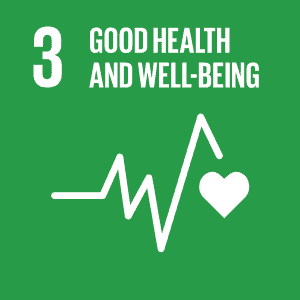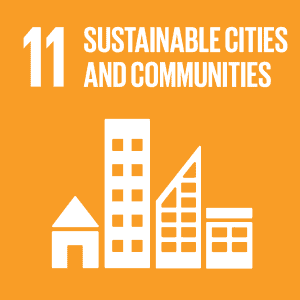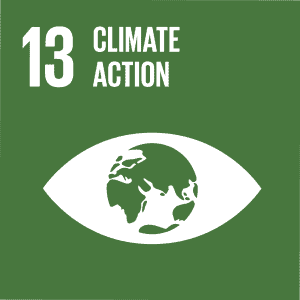Project Profile
Project Location
Highland Park, ILProject Operator
City of Highland ParkProject Type
PlantingProject Credits
1,604Credit Availability
AvailableProject Contact
Ben Miller, City Forester bmiller@cityhpil.comAs part of the Chicago Region Carbon Program, the City of Highland Park planted 809 trees between June 2019 and June 2022 on public rights-of-way throughout the city. The goals of the City’s Urban Forest Rejuvenation initiative are to enhance diversity within the City’s parkway and street tree populations, establish the next generation of mature urban forest canopy cover, provide human health and wildlife benefits, and increase the City’s climate resilience.
The trees planted for this project will provide important human health and wildlife benefits. The boulevards of Highland Park provide public access to green spaces for all residents and visitors. Parkway trees provide shade for users of City rights-of-way, improve air quality, and promote energy savings, among other financial and human health benefits. Moreover, parkway trees within the urban forest provide habitat and food for a diverse community of wildlife including birds, mammals, and insects. This includes crucial pollinator species reliant on a consistent population of mature trees.
This project is part of the Chicago Region Carbon Program (CRCP) and complements other tree planting and preservation projects in the seven-metro counties included in the Chicago Region Trees Initiative. Projects in the 2022 CRCP cohort include:
Co-Benefits
Trees planted as part of this project will provide ecosystem services, also known as co-benefits, when they reach 25 years old. The co-benefits represent a savings (avoided costs) of $55,778.97 per year when the trees reach age 25, and $1,394,474.25 over the next 25 to 50 years.
- Rain interception (stormwater management) – 3,931.70 m3/year, $28,147.30 per year
- Air quality – 0.1250 tons/year, $577.76 per year
- Energy use – cooling (electricity) – 124,341.50 kWh/year, $9,437.52 per year
- Energy use – heating (natural gas) – 1,809,643.62 kBtu/year, $17,616.40 per year
Social Impacts
The 17 United Nations Sustainable Development Goals (SDGs) are an urgent call for action and global partnership among all countries, representing key benchmarks for creating a better world and environment for everyone. Well-designed and managed urban forests make significant contributions to the environmental sustainability, economic viability and livability of cities. The main SDGs for this project are described below, with more detailed information in the Project Design Document.
 Street trees planted as part of this project provide substantial value to the community in terms of financial, ecological, and aesthetic benefits. On a broad scale, the urban forest serves to reduce air pollution and heat island effects as well as tempers the impacts of climate change and escalating meteorological extremes. Furthermore, in addition to sequestering carbon within the tissues of the tree itself, street tree planting makes pedestrian travel throughout the community a more viable alternative to motor vehicle traffic, facilitating options such as walking or biking, rather than fossil-fuel dependent locomotion. Oak trees were planted along Highland Park’s McClory Bike Trail as part of a native restoration and invasive species removal initiative. This is a popular recreational bike path that transects the Highland Park; connecting the surrounding lake front municipalities on the North Shore of Chicago.
Street trees planted as part of this project provide substantial value to the community in terms of financial, ecological, and aesthetic benefits. On a broad scale, the urban forest serves to reduce air pollution and heat island effects as well as tempers the impacts of climate change and escalating meteorological extremes. Furthermore, in addition to sequestering carbon within the tissues of the tree itself, street tree planting makes pedestrian travel throughout the community a more viable alternative to motor vehicle traffic, facilitating options such as walking or biking, rather than fossil-fuel dependent locomotion. Oak trees were planted along Highland Park’s McClory Bike Trail as part of a native restoration and invasive species removal initiative. This is a popular recreational bike path that transects the Highland Park; connecting the surrounding lake front municipalities on the North Shore of Chicago.
 Trees planted within parkways for this project repopulate the urban forest in the wake of mature tree canopy loss due to exotic disease and pest infestations such as Emerald Ash Borer and Dutch Elm Disease. Additional mortality in parkway trees has been realized by climate change-driven weather and environmental effects; such as extreme storm water events and temperature fluctuations. These trees promote active recreation and reduce the reliance on motor vehicles as well as mitigating conditions endemic to urban life; such as air pollution, noise, and heat island effects. The City also partnered with local middle school and high school students to plants oaks along the McClory Bike path. Staff used the opportunity to teach on the importance of native species to the ecosystem as well as proper tree planting practices.
Trees planted within parkways for this project repopulate the urban forest in the wake of mature tree canopy loss due to exotic disease and pest infestations such as Emerald Ash Borer and Dutch Elm Disease. Additional mortality in parkway trees has been realized by climate change-driven weather and environmental effects; such as extreme storm water events and temperature fluctuations. These trees promote active recreation and reduce the reliance on motor vehicles as well as mitigating conditions endemic to urban life; such as air pollution, noise, and heat island effects. The City also partnered with local middle school and high school students to plants oaks along the McClory Bike path. Staff used the opportunity to teach on the importance of native species to the ecosystem as well as proper tree planting practices.
 In addition to sequestering carbon and serving as habitat and forage for wildlife, parkway trees also serve to intercept storm water; slowing decent rates and overland flow and allowing for great soil infiltration. Greater infiltration means less runoff to carry pollutants into Lake Michigan and its tributaries. By increasing diversity in our urban forest, we are making it more resilient to novel insect and pest introductions, but also facilitating habitat for a wide variety of native fauna.
In addition to sequestering carbon and serving as habitat and forage for wildlife, parkway trees also serve to intercept storm water; slowing decent rates and overland flow and allowing for great soil infiltration. Greater infiltration means less runoff to carry pollutants into Lake Michigan and its tributaries. By increasing diversity in our urban forest, we are making it more resilient to novel insect and pest introductions, but also facilitating habitat for a wide variety of native fauna.
Total Credits Issued: 160
- 2022: 160 credits issued
Total Credits Sold: 0
Total Credits Retired: 0
Total Credits Cancelled: 0
Total Credits Available for Purchase: 160
